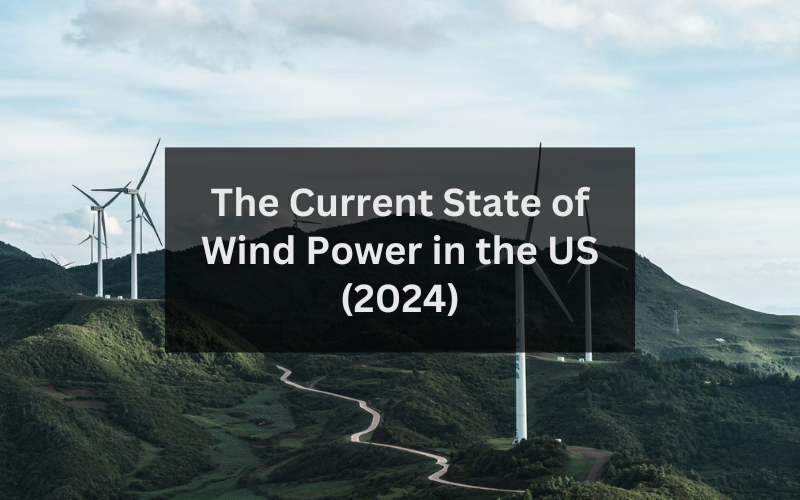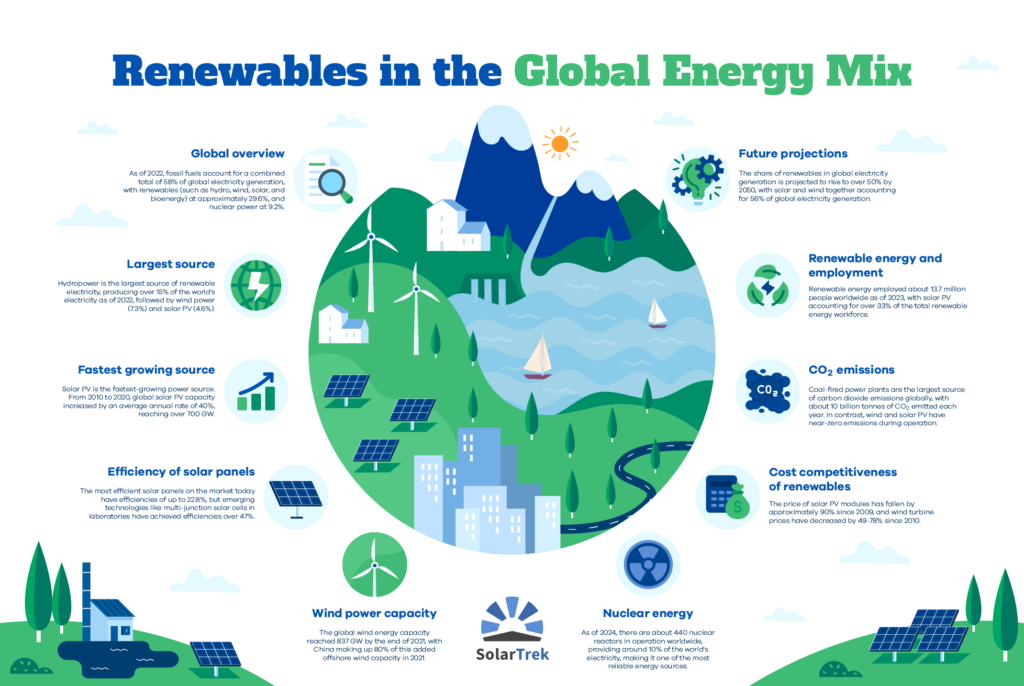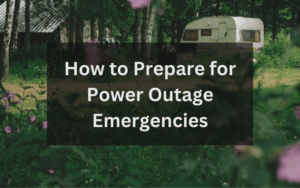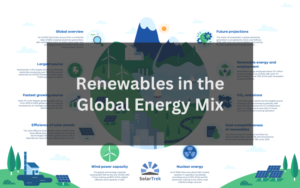Table of Contents
An overview of wind power
Wind power harnesses the natural power of wind to generate electricity, a process that has been refined over centuries but has seen significant technological advancements in recent decades. Here’s a basic overview of how this renewable energy source works and its historical development.
How do wind turbines generate electricity?
Wind turbines convert the kinetic energy from wind into electrical energy. This transformation begins when wind moves the turbine’s blades, which are designed like propellers. The blades are connected to a rotor, and as the wind speeds up, the rotor spins faster, turning a connected shaft inside the generator. The movement of the shaft through the generator’s magnetic field is what produces electrical energy.
The efficiency of this process can vary based on wind speed and turbine design, but modern turbines are highly efficient and can start generating electricity at wind speeds as low as 6-9 miles per hour (mph). At about 30 mph, turbines reach their maximum power output. Turbines typically shut down to prevent damage if wind speeds exceed 55 mph.
A brief history of wind power
The use of wind for mechanical power dates back to ancient civilizations, which used windmills to grind grain and pump water. The basic concept of using wind to produce energy has not changed dramatically over the years, but the applications and efficiencies have.
In the US, wind energy has evolved from powering rural America in the early 20th century to becoming a major component of the national grid today. By the late 20th century, technological advancements allowed for larger turbines capable of generating megawatts of power. Today, these modern turbines can be found in wind farms across the country and offshore, contributing significantly to the country’s energy mix.
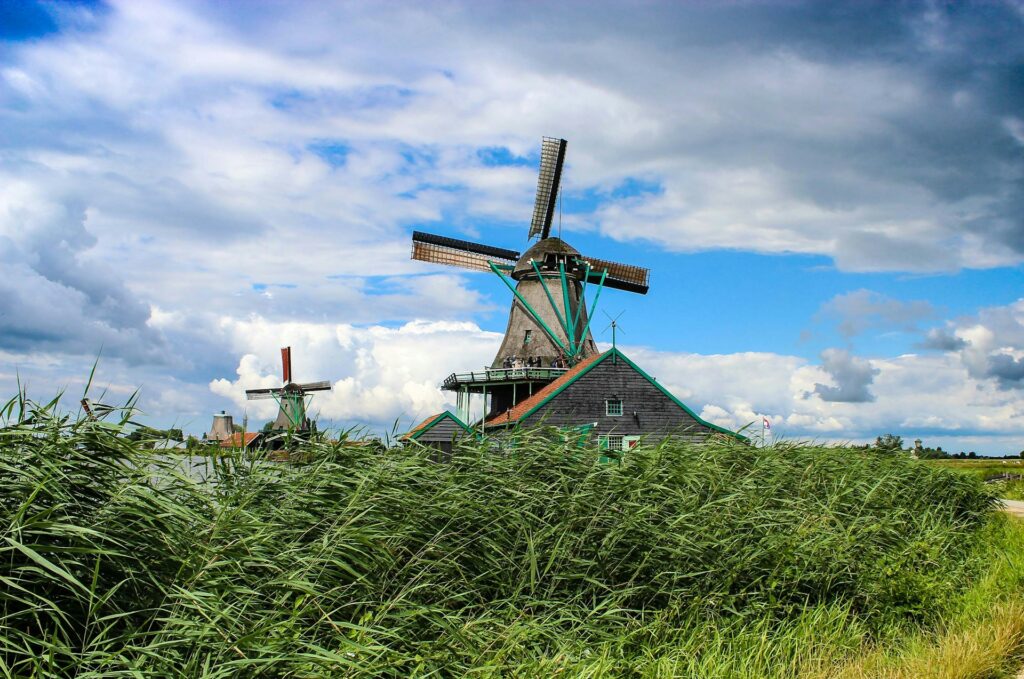
What are the advantages of wind power?
Wind power offers numerous benefits that extend beyond simply generating clean energy. These advantages include significant contributions to job creation, economic growth, environmental improvements, and support for local communities.
Job creation and economic growth
Wind power is a significant job creator. In the US alone, the wind industry employs over 125,000 people across various roles, from technicians to engineers and from manufacturing to project management. According to the U.S. Bureau of Labor Statistics, the role of wind turbine service technician is the fastest growing job in the country. As the industry continues to expand, it could potentially support hundreds of thousands more jobs by 2050.
This growth not only contributes to reducing unemployment but also adds considerable economic value. In 2022, investments in new wind projects contributed $20 billion to the U.S. economy, demonstrating the sector’s robust impact on national financial health.
Environmental benefits
One of the most significant advantages of wind power is its low impact on the environment compared to fossil fuels. Wind turbines produce electricity without burning any fuel or emitting pollutants into the air. This clean energy source helps the United States avoid approximately 336 million metric tons of carbon dioxide emissions annually – equivalent to the emissions from 73 million cars. By reducing reliance on fossil fuels, wind energy contributes substantially to combating climate change and improving air quality.
Support for local communities
Wind projects also benefit local communities economically. They provide a steady income stream through state and local tax payments and land-lease payments, contributing an estimated $2 billion annually. This additional revenue can help enhance local services, such as schools and infrastructure, and reduce the tax burden on residents.
Moreover, because wind farms can be built in rural areas, they often bring development and job opportunities to under-served regions, helping to balance economic disparities.
Cost-effectiveness
Land-based, utility-scale wind is one of the lowest-cost energy sources available today. The cost of generating wind power has decreased significantly over the years, thanks to advancements in technology and increased efficiency. This cost competitiveness is expected to improve further, making wind energy an economically viable option for an even broader range of applications and regions.
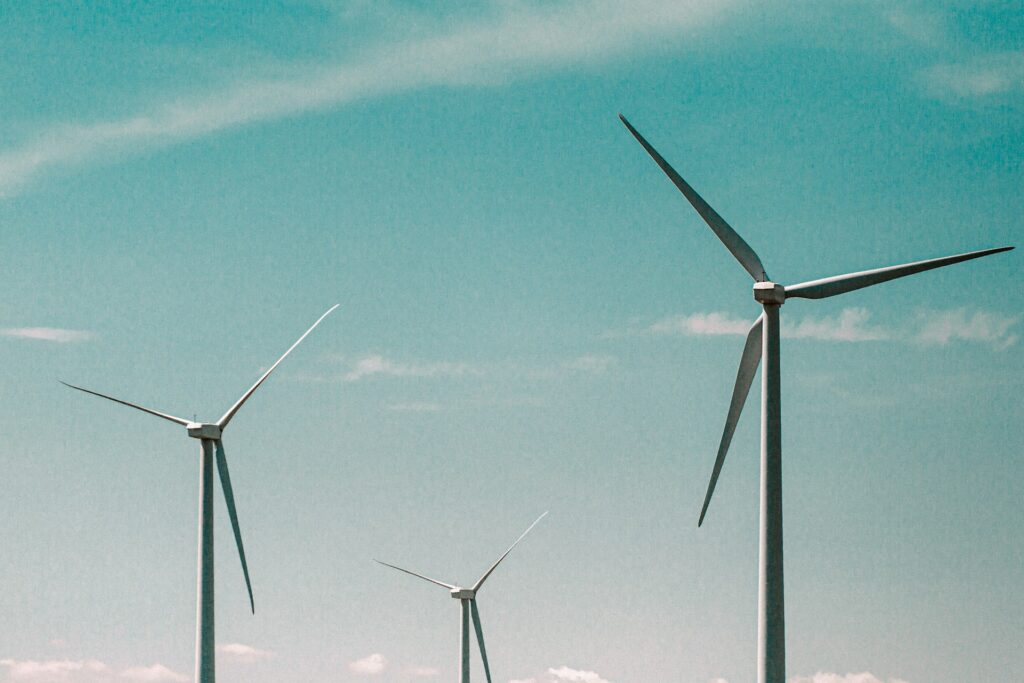
What are the challenges facing wind power?
While wind power presents many benefits, as covered above, it also faces a range of challenges that can impact its growth and effectiveness. These challenges span technical, socio-economic, and environmental aspects, each requiring attention and resolution to ensure the sustainable expansion of wind energy.
Technical and installation challenges
Installing wind turbines and maintaining optimal operation can present significant technical challenges. One major hurdle is the location of wind farms. Ideal wind sites are often in remote areas, which complicates the logistics of transporting large turbine components and building the necessary infrastructure. Additionally, integrating wind power into the existing grid can be complex, requiring upgrades to transmission networks to handle the variable nature of wind energy. Such upgrades are essential to transport electricity from wind-rich rural areas to urban centers where it is most needed.
Economic competitiveness
Economically, to be adopted at a large scale, wind power must be able to contend with other energy sources. While the cost of wind energy has decreased, making it more competitive, it still faces financial challenges in areas with lower wind speeds where generating efficiency might be reduced. Furthermore, the initial investment for setting up wind turbines can be high, necessitating significant capital and often government subsidies or incentives to become cost-effective compared to established fossil fuel technologies.
Environmental and wildlife impacts
Wind turbines can have diverse environmental impacts. Although they produce clean energy, the turbines themselves can affect local wildlife, particularly birds and bats which may collide with turbine blades. Continuous research and technological advancements are necessary to mitigate these impacts, such as improving turbine design and implementing better wildlife monitoring systems. Additionally, the noise and visual impact of wind turbines can lead to local opposition, sometimes referred to as ‘not in my backyard’ (NIMBY) syndrome, which can delay or halt projects.
Socio-economic barriers
On a socio-economic level, the development of wind energy can face resistance from communities. Concerns about changes in landscape aesthetics and potential decreases in property values can lead to opposition against wind farm developments. Addressing these concerns involves community engagement and education about the benefits of wind energy, as well as consideration of local views in the planning and development process.

The current state of wind power in the US
The wind power sector in the US has experienced significant growth over the past decade. However, 2023 marked a notable shift with a slight decrease in wind energy production – the first drop since the mid-1990s. Here, we will look at the recent statistics and explore the factors contributing to last year’s decline in wind power generation in the US.
Recent trends and statistics
In 2023, the US generated approximately 425,235 gigawatt-hours (GWh) of electricity from wind turbines, according to data from the Energy Information Administration (EIA). This figure represents a 2.1% decrease from the 434,297 GWh generated in 2022. Despite the decline, wind power remains a major contributor to the U.S. energy portfolio, with substantial installations contributing to a total capacity of 147.5 gigawatts (GW) by the end of the year.
Factors contributing to its decline
The primary reason for the reduction in wind power generation in 2023 was an overall decrease in wind speeds across the country. Specifically, the first half of the year saw a 14% drop in wind generation compared to the same period in 2022. Although wind speeds slightly recovered in the latter half of the year, being 2.4% higher than the same period in 2022, it was not enough to compensate for the earlier shortfall.
Regional variations in wind generation
The decline in wind generation was not uniform across the United States. The upper Midwest, particularly the East North Central and West North Central Census Divisions, experienced sharper declines of 6% and 9%, respectively. These areas account for a significant portion of the country’s installed wind capacity. Conversely, some regions saw increases in wind generation; for example, Texas, which hosts the largest wind generation fleet in the country, recorded a 4.4% increase in wind power generation in 2023.
Investment and expansion
Despite the decrease in generation, investment and expansion in the wind sector has still continued. The US Department of the Interior recently proposed new offshore wind lease areas off the coast of Oregon and in the Gulf of Maine, which could support more than 18GW of additional energy generation. These projects not only capitalize on the strong and consistent wind patterns over the oceans but also help diversify the geographical distribution of wind power generation, reducing dependence on land-based wind resources.
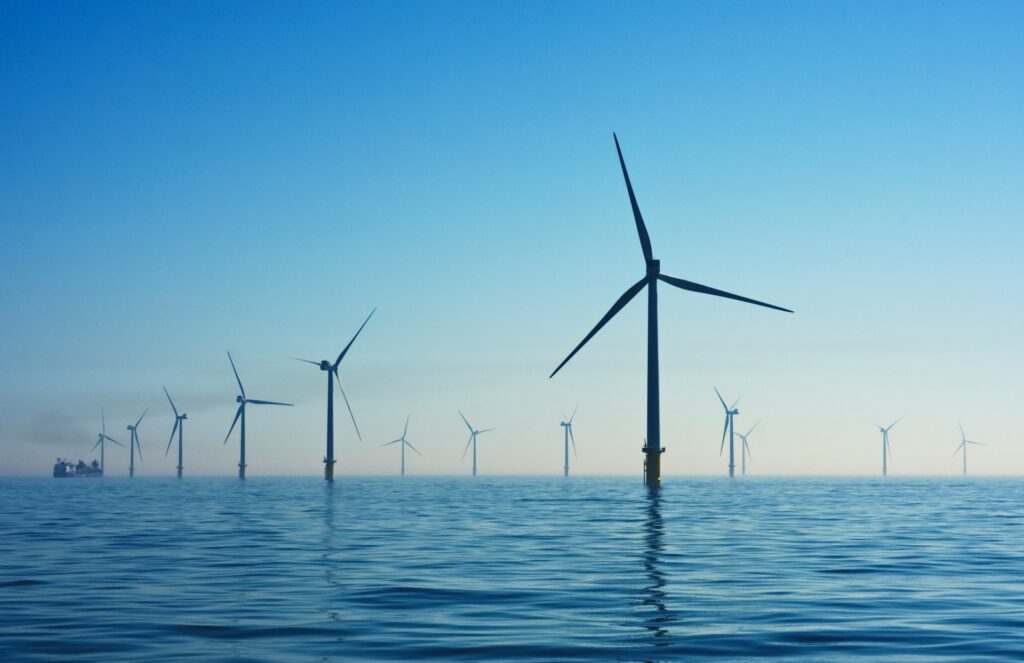
Future prospects of wind power
Despite recent short-term fluctuations in production, the future prospects for wind power in the US appear promising. This is due to a combination of factors, including recent technological advancements, policies, and new initiatives aimed at expanding offshore wind capacities.
Technological advancements
Continuous improvements in turbine technology are expected to increase the efficiency and capacity of wind power generation. Innovations such as taller turbine towers, larger rotor diameters, and advanced materials allow for harnessing wind energy at greater heights and lower wind speeds, expanding the viability of wind projects to previously untapped locations. Additionally, advancements in grid integration technologies and energy storage solutions are set to improve the reliability and stability of wind power in the energy mix.
Policy support and investment
Federal and state policies continue to play a crucial role in shaping the future of wind energy. Initiatives like the Inflation Reduction Act, and various state-level renewable portfolio standards provide critical financial incentives and regulatory support, driving further investment into wind power. As mentioned previously, the US Department of the Interior’s recent proposals for new offshore wind lease areas are a testament to this support, aiming to substantially increase the country’s offshore wind capacity and contribute to national energy goals.
Growth and market dynamics
As wind power technology becomes more cost-competitive and as more regions open up for development, the market for wind energy is expected to continue growing. This growth is likely to be supported by increasing consumer demand for clean energy, corporate sustainability commitments, and international efforts to reduce carbon emissions.
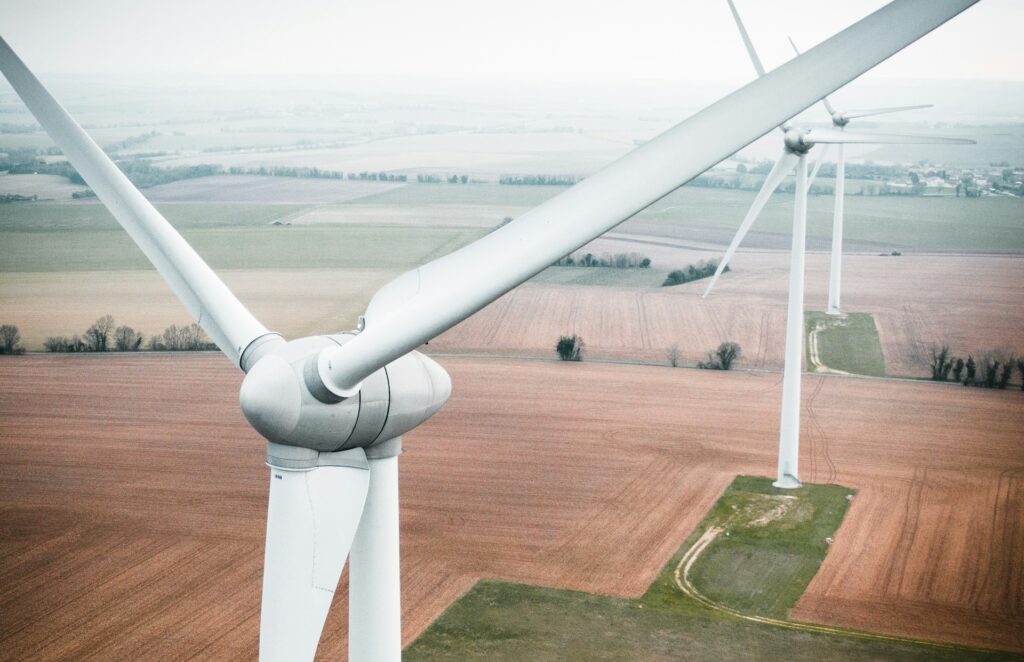
Conclusion
Despite the challenges posed by natural variability and competition with other energy sources, the ongoing technological innovations, strong policy support, and strategic investments signal a dynamic growth phase for wind energy. This aligns with the broader national and global movement towards a more sustainable and resilient energy system, positioning wind power as a key player of future energy solutions.
For a truly resilient energy infrastructure, wind energy should be integrated with a diversified mix of renewable resources such as solar and hydropower, perhaps complemented by reliable baseload sources like nuclear and fossil fuels as we seek to expand the capacity of renewable sources to meet demands. This integrated approach will help balance the variable nature of wind and solar energies and meet the baseline demand efficiently.
To see the sources of the facts featured in the above infographic, visit our article on Renewables in the Global Energy Mix.


